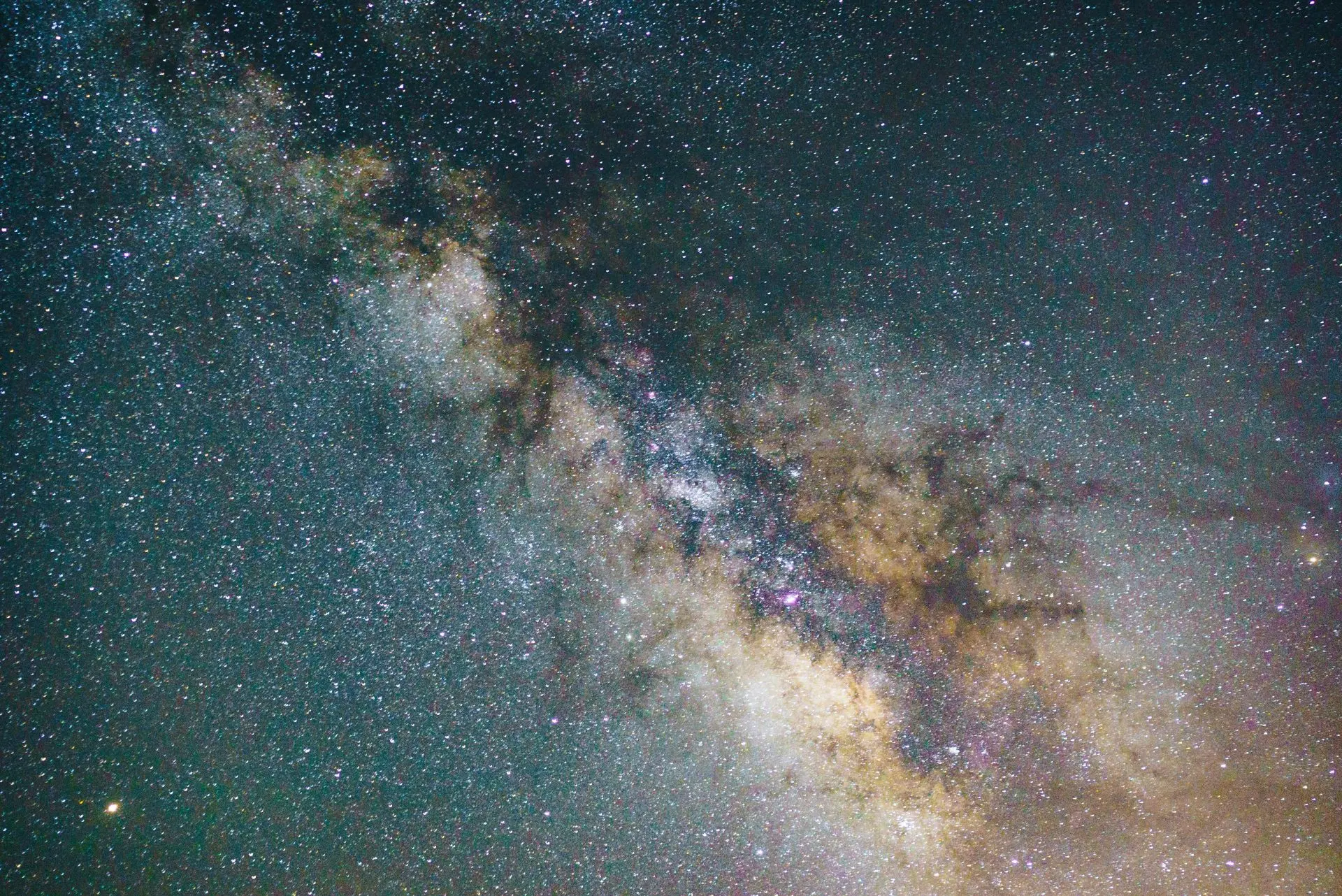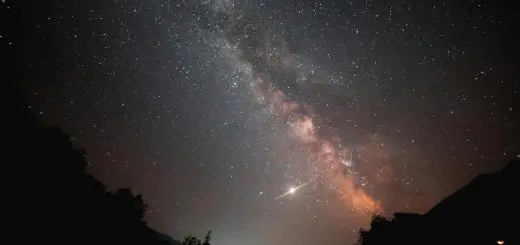How Climate Change Is Affecting Animal Migration Patterns

Looking for more amazing products? Check out our online store and explore our collection here! Happy shopping!
Before diving in, please note: This post is for informational purposes only. If you’d like to know more about how we approach topics, feel free to check out our friendly Disclaimer Page.
Hey there, amazing readers! 
We’re committed to delivering quality posts, and your support (even just sticking around despite the ads) means everything to us. So, bear with us, and thanks for helping us keep the good vibes rolling. Now, on to the fun stuff!
TRANSLATE BUTTON AT THE END OF THE ARTICLE
A Quick Overview
Animal migration is one of nature’s most astounding spectacles.
Each year, countless species embark on epic journeys, driven by instincts honed through eons.
Yet, as the planet experiences shifts in climate, these routes and behaviors undergo significant changes.
This article explores how climate change is reshaping the way animals migrate, the challenges they face, and the stories of resilience that emerge.
So, grab a cup of tea, settle in, and let’s dive deep into this fascinating topic!
Understanding the Basics of Animal Migration Patterns
Migration is a remarkable behavior observed in many animal species.
It’s the seasonal movement from one habitat to another, often in search of food, breeding grounds, or better climate conditions.
Think of it as a grand adventure, where animals travel thousands of miles to ensure their survival.
Many birds, for example, migrate to escape harsh winter conditions.
They often follow specific routes, known as flyways, which have been used for generations.
Monarch butterflies, too, embark on an extraordinary journey, traveling from North America to central Mexico.
These migrations are not random; they follow the rhythms of nature, guided by environmental cues.
But it’s not just about distance; timing is crucial.
Animals rely on the availability of food and suitable breeding conditions.
Therefore, any changes in climate can disrupt these essential patterns.
When seasons shift, it can confuse these creatures, leading them to arrive too late or too early in their destinations.
We see this in various species.
For instance, caribou in the Arctic rely on the timing of plant growth to fuel their migration.
If the plants bloom earlier due to warmer temperatures, the caribou might miss the nutrient-rich forage they depend on.
Understanding these patterns helps us appreciate the delicate balance that sustains life on Earth.
When climate change enters the equation, however, this balance is thrown out of whack, leading to unforeseen consequences.
The Role of Climate Change in Migration Shifts
Climate change isn’t just a buzzword; it’s a reality that affects every corner of our planet.
The increase in greenhouse gases is leading to rising temperatures, altered weather patterns, and changing ecosystems.
As a result, animals are forced to adapt their migration habits — often in unforeseen ways.
For instance, some birds are arriving at their breeding grounds earlier than usual.
This phenomenon, known as phenological change, is largely a response to warmer springs.
Yet, arriving too early can be a gamble.
If food sources haven’t yet emerged, these birds may struggle to find sustenance.
Additionally, species that have historically migrated to specific areas might find those areas unsuitable due to climate-related shifts.
Discover "Dog Care: Learning How to Care for Your Furry Friend
"
For example, the once-reliable food sources or nesting sites may vanish, prompting animals to seek alternative habitats.
This shift can lead to competition between species that typically wouldn’t overlap, creating tension and conflict.
Research shows that marine animals are also affected.
Fish populations are migrating towards cooler waters, often altering fishing patterns and impacting local economies.
It’s a ripple effect that touches everything from the fish on our plates to the birds in our skies.
As we connect the dots between climate change and migration, it’s clear that these shifts are not isolated.
They represent a broader struggle for survival in a changing environment.
Rising Temperatures: A New Challenge for Wildlife
One of the most immediate impacts of climate change is rising temperatures, which pose significant challenges for wildlife.
Just think about it: many species are fine-tuned to specific temperature ranges, and even slight changes can disrupt their lives.
For example, amphibians are particularly sensitive to temperature fluctuations.
Habitats that were once suitable may become inhospitable, leading to population declines.
This is alarming, as amphibians play a crucial role in their ecosystems, controlling insect populations and serving as food for other wildlife.
Birds also face challenges with elevated temperatures.
Many species nest in trees or shrubs, and if these plants bloom earlier due to warmer springs, it can lead to mismatches in nesting and food availability.
Imagine a nest full of chicks waiting for insects that haven’t yet emerged — it’s a recipe for disaster.
Some animals may attempt to migrate to cooler areas, but this isn’t always feasible.
Urbanization and habitat fragmentation often create barriers, leaving these creatures with limited options.
This is where mother nature’s blueprint becomes a ticking clock — the pressure is on to find suitable habitats before it’s too late.
The Impact of Melting Ice on Arctic Animal Movements
The Arctic is one of the most visible markers of climate change, and it’s creating significant disruptions in animal migrations.
As ice melts, traditional migration routes for creatures like polar bears and seals are altered.
Polar bears, for example, rely on sea ice to hunt seals.
With the ice retreating, they’re forced to travel farther distances, which can be exhausting and perilous.
Imagine being a bear, trying to catch a meal while swimming long distances in open water.
It’s a tough situation to be in.
Additionally, seals need the ice to breed and rear their pups.
Without adequate ice coverage, they may not find suitable places to give birth.
This disruption can lead to lower pup survival rates, threatening the entire population.
Even migratory birds that rely on the Arctic for breeding are affected.
Changes in the timing of ice melt can impact when and where they settle.
If they arrive at their nesting grounds only to find them still frozen, they may miss their chance to reproduce.
These changes not only threaten individual species but also the interconnected web of life in the Arctic.
The impacts ripple through the food chain, affecting everything from plant life to larger predators.
Changes in Weather Patterns and Their Effects on Birds
Weather patterns are like the mood swings of our planet.
As climate change alters these patterns, birds find themselves in a tough spot.
Storms may become more intense, or droughts may stretch longer than before, impacting food availability and suitable habitats.
Take, for example, the Atlantic hurricane season.
Increased storm intensity can disrupt migratory pathways, forcing birds to alter their routes.
Some may take more treacherous paths to avoid storms, while others may simply choose to skip migration altogether.
Birds also face challenges when breeding seasons are affected by weather changes.
A late frost or unexpected heatwave can destroy nests or reduce insect populations.
And if the breeding season is compromised, that means fewer young birds to carry on the lineage.
Moreover, many migratory birds rely on specific stopover sites along their routes.
If these sites face extreme weather events, such as flooding or prolonged drought, it can severely impact their migration success.
It’s a precarious tightrope these birds walk, balancing their need to migrate with the unpredictability of weather.
Each season brings new challenges, testing their resilience and adaptability.
How Ocean Currents Influence Marine Migration Routes
Our oceans are vast and dynamic, and ocean currents play a critical role in the migration of marine animals.
These currents affect everything from nutrient distribution to the habitats available for marine species.
For instance, many fish migrate along currents to find food and suitable breeding grounds.
Changes in temperature and salinity due to climate change can alter these currents, pushing fish populations into new areas.
This shift can create challenges for fishermen and communities relying on these species for their livelihoods.
Marine mammals like whales also rely on currents when migrating long distances.
They often follow specific routes that lead them to feeding grounds, but if currents shift dramatically, they may find themselves in unfamiliar territory.
This displacement can lead to increased mortality rates and lower reproductive success.
Sea turtles, too, navigate using ocean currents.
With rising sea temperatures and changing currents, their migratory paths are being disrupted.
This can affect their nesting habits and the survival of hatchlings, adding yet another layer of vulnerability to these iconic creatures.
As we observe these shifts, it’s a stark reminder of how interconnected our ecosystems are.
The ocean doesn’t just act as a barrier; it’s a connecting thread that weaves together the lives of countless species.
The Importance of Food Supply in Migration Timing
Food is the lifeblood for migrating animals, and its availability directly influences migration timing.
Many species time their migrations to coincide with food sources, such as blooming plants or spawning fish.
However, climate change disrupts these natural cycles.
If temperatures rise and spring comes earlier, plants may bloom sooner.
Birds that haven’t yet arrived could miss peak feeding times.
This mismatch can lead to decreased survival rates for fledglings and adults alike.
Similarly, many marine species time their migrations to coincide with the upwelling of nutrient-rich waters.
If these patterns shift, it can lead to food shortages.
Imagine a whale arriving at its feeding grounds only to find slim pickings — it’s a worrying prospect.
Some species are adapting by changing their migration routes or timings.
However, this isn’t a guaranteed solution.
The availability of food is just one piece of a much larger puzzle, and as climate change continues to alter habitats, the entire ecosystem can be thrown off balance.
I remember watching a documentary about the challenges faced by a population of shorebirds.
They rely on a specific type of crab that spawns at a particular time.
When the timing of the crab’s spawning shifted due to rising sea temperatures, the birds struggled to find enough food.
It was heartbreaking to see.
Adaptations: How Animals Are Coping with Change
Nature is incredibly resilient, and many animals are adapting to the changes brought about by climate change.
Some species are modifying their migration routes, while others are changing their behaviors to cope with new conditions.
For instance, some birds are starting to migrate shorter distances or even skipping migration altogether.
This shift is often a response to milder winters, allowing them to stay in their breeding grounds longer.
While this might seem beneficial initially, it can lead to overcrowding and increased competition for resources.
Similarly, some species are shifting their breeding times to align better with the availability of food.
For example, certain butterflies have started emerging earlier in the season to target blooming flowers.
It’s a clever strategy but may not always work out as the climate continues to change unpredictably.
In the ocean, some fish species are swimming further north to find cooler waters.
This adaptation highlights the importance of being flexible in the face of change.
However, not all species can adapt quickly enough, leaving them vulnerable to extinction.
While these adaptations are inspiring, they also raise questions about the future.
How many species can realistically adjust before it’s too late?
This uncertainty hangs over both wildlife and conservationists alike.
Successful Migration: Stories of Resilience and Hope
Even amid challenges, there are inspiring stories of resilience in the animal kingdom.
Some species are finding ways to thrive despite the odds.
Take the case of the Arctic Tern, which migrates from the Arctic to the Antarctic and back each year.
Despite facing harsh conditions and changing climates, these birds continue to complete one of the longest migrations on Earth.
Their journey is a testament to nature’s endurance.
Similarly, the California gray whale has shown remarkable resilience.
After facing near extinction due to whaling, their populations have rebounded.
They now migrate along the West Coast, showcasing the power of conservation efforts.
Even the monarch butterfly, which faces numerous challenges, continues its migration across North America.
Conservation initiatives focused on preserving milkweed habitats are helping to support their journey.
These stories remind us that while climate change poses significant threats, the spirit of survival remains strong in many species.
It’s essential to celebrate these successes and recognize the efforts that have gone into protecting these remarkable animals.
Conservation Efforts to Protect Migrating Species
As we’ve seen, the challenges posed by climate change are daunting, but numerous conservation efforts are underway to help migrating species.
Organizations worldwide are working tirelessly to protect habitats, restore ecosystems, and raise awareness about the plight of migratory animals.
One approach is the establishment of protected areas along migratory routes.
These sanctuaries provide safe havens for species to rest, feed, and breed.
In the U.S., the Migratory Bird Treaty Act is a significant piece of legislation aimed at protecting migratory birds and their habitats.
Efforts to restore wetlands are also crucial.
Wetlands serve as vital stopover points for migratory birds, providing food and shelter.
By restoring these habitats, we can ensure that birds have the resources they need during their journeys.
Community engagement is another critical aspect of conservation.
Local organizations often host events to educate the public about the importance of protecting migratory species.
By fostering a sense of stewardship, we can inspire collective action.
Every small effort counts, whether it’s planting native flowers to support pollinators or advocating for sustainable fishing practices.
If each of us takes a few steps toward conservation, it adds up to significant change.
How You Can Help Wildlife in a Changing Climate
You might be wondering, "What can I do to help?" Well, every action counts, and there are simple ways to make a difference.
Plant native species: Create a garden that supports local wildlife.
Native plants provide food and shelter for birds, butterflies, and other pollinators.
Reduce plastic use: Plastics can end up in our oceans, harming marine life.
By reducing your plastic consumption, you can help keep habitats safe.
Support conservation organizations: Consider donating to groups focused on animal migration and habitat preservation.
Your contributions can make a significant impact.
Participate in citizen science: Join local projects to monitor wildlife populations.
Your observations can help researchers track trends and changes.
Advocate for climate action: Support policies and initiatives aimed at combating climate change.
Your voice matters!
By taking these steps, you not only contribute to the well-being of wildlife but also become part of a broader movement for environmental stewardship.
Together, we can create a future where animals can continue their migrations and thrive.
Looking Ahead: The Future of Animal Migration Trends
As we look to the future, the challenges of climate change will continue to shape animal migration trends.
The uncertainties can seem overwhelming, but it’s also an opportunity for innovation and collaboration.
Increased research efforts will help us understand how species are adapting and what conservation strategies are most effective.
With technology, scientists can track migrations in real-time, providing valuable insights into animal behavior.
Furthermore, community involvement will play a crucial role in conservation efforts.
As awareness grows, more individuals will take action to protect the habitats that support migratory species.
It’s essential to remain optimistic.
Nature has an incredible capacity for resilience, and by standing together, we can foster an environment where animals can thrive.
Each season brings new challenges, but it also brings hope.
Let’s continue to cherish these incredible journeys and work towards a world where both wildlife and humans can coexist harmoniously.
Together, we can make a difference and ensure that future generations can witness the beauty of animal migration.
Conclusion
Animal migration is a breathtaking display of nature’s ingenuity, but climate change is rewriting the rules.
It disrupts patterns, challenges survival, and tests the limits of adaptability.
The good news?
There are stories of hope, resilience, and dedicated efforts to protect these remarkable creatures.
Through increased awareness, conservation efforts, and individual actions, we can all play a part in ensuring the survival of migratory species.
So, let’s embrace our role as stewards of the earth.
Together, we can pave the way for a brighter future where animals continue to embark on their epic migrations, reminding us of the beauty and complexity of life on our planet.

The Enlightenment Journey is a remarkable collection of writings authored by a distinguished group of experts in the fields of spirituality, new age, and esoteric knowledge.
This anthology features a diverse assembly of well-experienced authors who bring their profound insights and credible perspectives to the forefront.
Each contributor possesses a wealth of knowledge and wisdom, making them authorities in their respective domains.
Together, they offer readers a transformative journey into the realms of spiritual growth, self-discovery, and esoteric enlightenment.
The Enlightenment Journey is a testament to the collective expertise of these luminaries, providing readers with a rich tapestry of ideas and information to illuminate their spiritual path.
Our Diverse Expertise
While our primary focus is on spirituality and esotericism, we are equally passionate about exploring a wide range of other topics and niches 

To ensure we provide the most accurate and valuable insights, we collaborate with trusted experts in their respective domains 
Our blog originally focused on spirituality and metaphysics, but we’ve since expanded to cover a wide range of niches. Don’t worry—we continue to publish a lot of articles on spirituality! Frequently visit our blog to explore our diverse content and stay tuned for more insightful reads.
Hey there, amazing reader! 
Check out our store here and take a peek at some of our featured products below! Thanks for being awesome!











